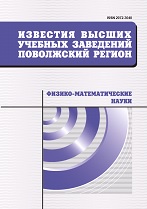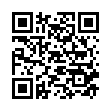|
Physics
Effects of dissipative tunneling: theory and comparison with an experiment
P. V. Krevchik, V. D. Krevchik, M. B. Semenov
Penza State University, Penza
Abstract:
Background. The interest in the dissipative tunneling theory in recent years has significantly increased because of the nanostructures technology development, as well as because of the wide usage in scientific research of properties of nanostructure atomic force and scanning tunneling microscopes. The relevance of these studies from the practical point of view is associated with development prospects of the element base for quantum computers, for lasers, based on impurity transitions, for photodetectors with controlled characteristics, etc. From a fundamental point of view, researching of such nonlinear tunneling effects, as two-dimensional tunnel bifurcations, quantum beats, stochastization in tunneling transfer etc, are of great interest. The aim of this work is to theoretically study the influence of two local phonon modes on 1D- and 2D - dissipative tunneling under an external electric field at the finite temperature in the system of combined atomic force and scanning tunneling microscopes for tunnel-coupled quantum dots, as well as to compare the theoretical results with the experimental data. Materials and methods. Calculations of the field dependence for the 1D and 2D - dissipative tunneling probability were carried out for the model oscillator potential, taking into account the interaction with one or two local phonon modes of the wide-band matrix within the semiclassical instanton approximation. A qualitative comparison of the obtained theoretical field dependence in the dissipative tunnel probability with experimental tunnel current-voltage characteristics for semiconductor quantum dots of InAs, as well as for quantum dots of colloidal gold at the initial stage of their formation, were also fulfilled. Results. The authors have theoretically identified a regime of oscillating one-dimensional dissipative tunneling, taking into account the influence of two local phonon modes of the dielectric matrix that gives qualitative explanation of some experimental tunnel current-voltage characteristics for quantum dots of InAs / GaAs with the nonequidistant and non-monotonic amplitude characteristic peaks. It is shown that in the mode of synchronous parallel tunnel transfer from a cantilever tip to a quantum dot the presence of two local phonon modes leads to appearance of two stable peaks on the field dependence of the two-dimensional dissipative tunneling probability. A qualitative comparison of the theoretical curve in the weak dissipation limit with the experimental tunnel current - voltage characteristics was carried out for growing quantum dots of colloidal gold under a cantilever tip at the initial stage of its formation, when the size of quantum dots did not exceed 10 nm. It has found that on the temperature dependence of the two-dimensional dissipative tunneling probability one of two stable peaks, corresponding to interaction of tunneling particles with two local phonon modes, can be splitted into two that may be realized due to the interference mechanism for tunnel channels. It has been discovered that near the bifurcation point the theoretically predicted and experimentally observed quantum-beat mode regime can be realized. Conclusions. Dissipative tunneling parameters (frequencies of local phonon modes, coefficients of the tunnel particle interaction with these phonon modes) as also the temperature and the intensity of an external electric field can effectively manage the tunnel transport in quantum dots under a cantilever tip of the combined atomic force and scanning tunneling microscopes.
Keywords:
quantum dot, quasiclassical approximation, instanton method, dissipative tunneling, electric field, atomic force and scanning tunnel microscopes.
Citation:
P. V. Krevchik, V. D. Krevchik, M. B. Semenov, “Effects of dissipative tunneling: theory and comparison with an experiment”, University proceedings. Volga region. Physical and mathematical sciences, 2016, no. 2, 147–180
Linking options:
https://www.mathnet.ru/eng/ivpnz251 https://www.mathnet.ru/eng/ivpnz/y2016/i2/p147
|

| Statistics & downloads: |
| Abstract page: | 37 | | Full-text PDF : | 9 | | References: | 14 |
|




 Contact us:
Contact us: Terms of Use
Terms of Use
 Registration to the website
Registration to the website Logotypes
Logotypes







 Citation in format
Citation in format 